The Evolution of Gas Turbine Technology
Historical development of gas turbine technology from early concepts to modern implementations
The concept of the gas turbine dates back to 1791 when John Barber patented the first design. However, practical implementation remained elusive until the early 20th century. The breakthrough came in 1939 when Hans von Ohain and Sir Frank Whittle independently developed the first operational jet engines powered by gas turbines.
These early innovations primarily served military applications, but by the 1950s, gas turbines began transforming commercial aviation and industrial power generation. The technology has since undergone remarkable evolution, with modern gas turbines achieving previously unimaginable levels of efficiency, reliability, and environmental performance.
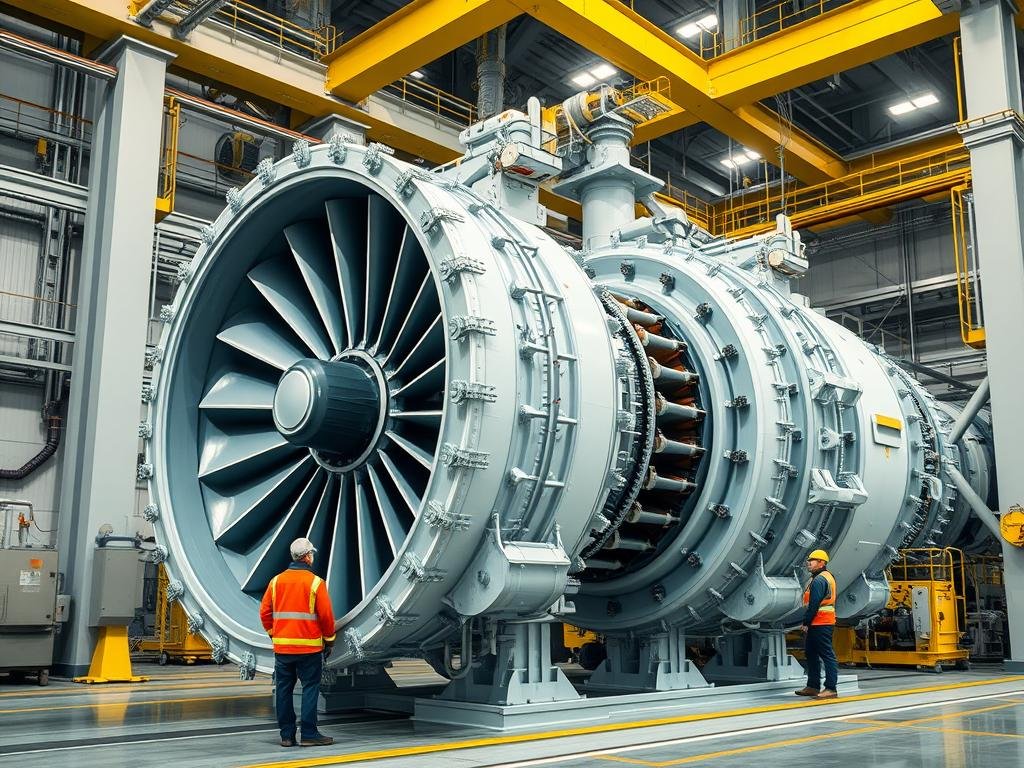
State-of-the-art gas turbine installation in a modern power generation facility
Working Principle: The Brayton Cycle Explained
At its core, a gas turbine operates on the Brayton cycle, a thermodynamic process that converts heat energy into mechanical work. Think of it as a sophisticated version of blowing on a pinwheel—but instead of your breath, it uses the controlled combustion of fuel to create a high-energy gas flow that spins a turbine.
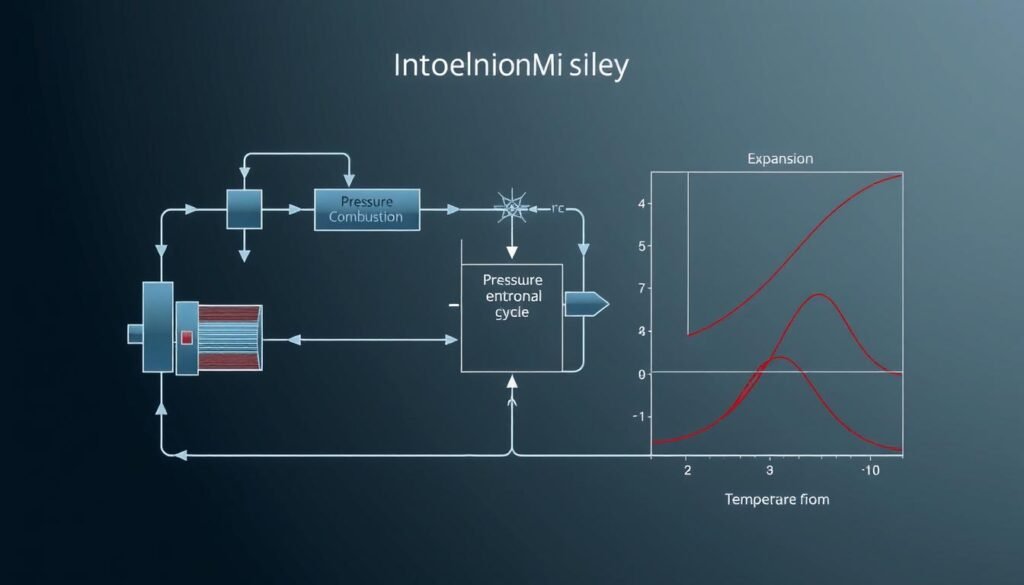
The Brayton cycle illustrating the four fundamental processes in gas turbine operation
The Brayton cycle consists of four key processes:
- Compression: Ambient air is drawn in and compressed, increasing both its pressure and temperature.
- Combustion: Fuel is injected and ignited in the compressed air, creating a high-temperature, high-pressure gas.
- Expansion: The hot gas expands through the turbine section, converting thermal energy to mechanical energy.
- Exhaust: Spent gases are expelled, often through heat recovery systems in power generation applications.
This continuous cycle creates a self-sustaining process once started. The turbine extracts enough energy to power the compressor and overcome mechanical losses, with the remaining energy available as useful output—whether for generating electricity, propelling an aircraft, or driving industrial equipment.
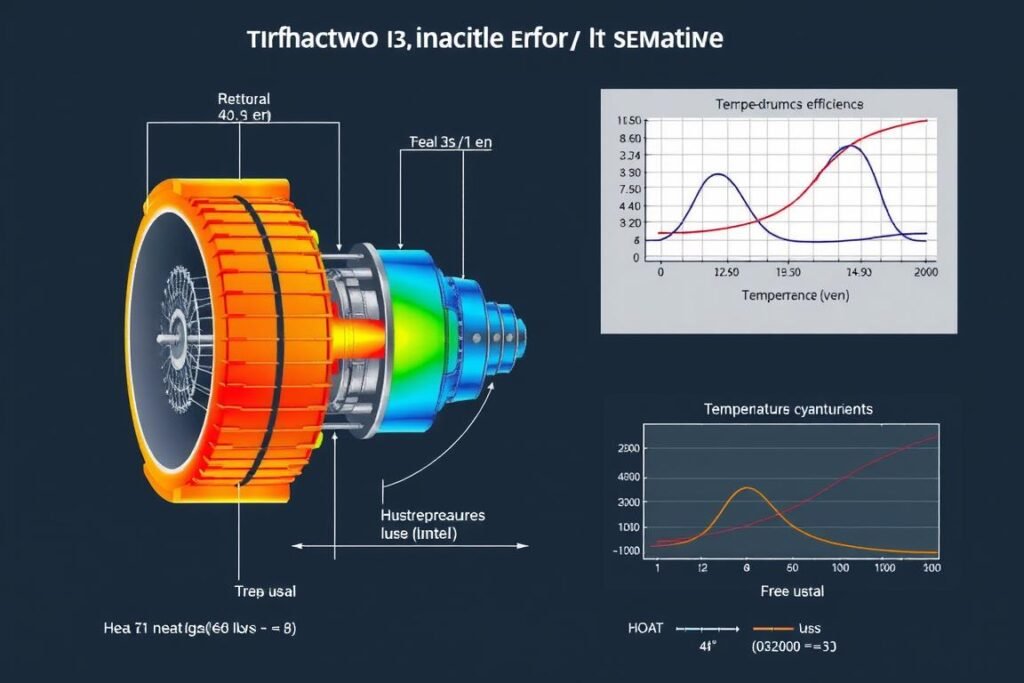
Thermodynamic efficiency factors in modern gas turbine design
Key Components of a Gas Turbine
Modern gas turbines are marvels of precision engineering, with each component designed to withstand extreme conditions while maintaining optimal performance. The four primary sections work in harmony to convert fuel energy into usable power.
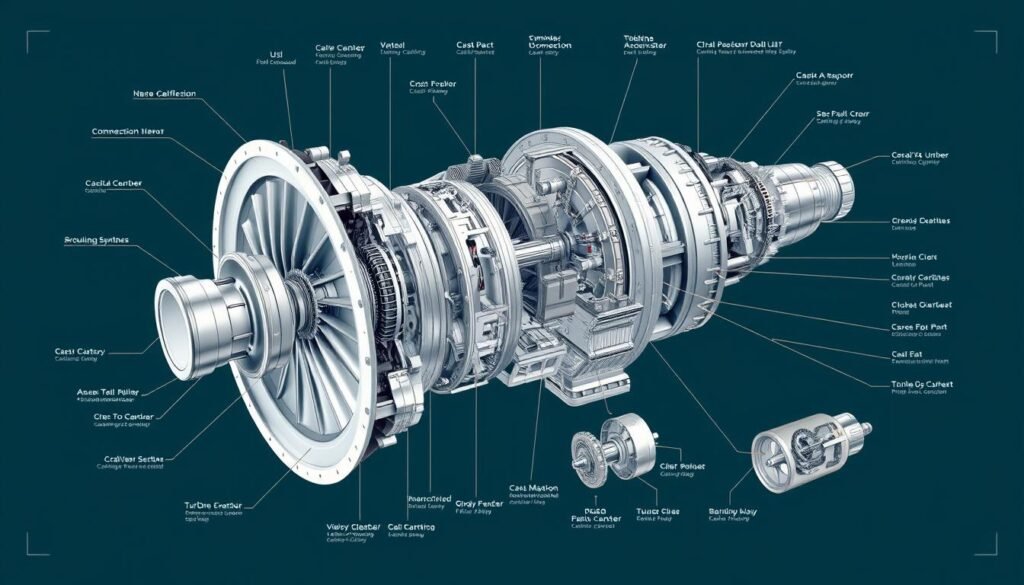
Exploded view showing the major components of a modern gas turbine
Compressor Section
The compressor section serves as the gas turbine’s lungs, drawing in ambient air and pressurizing it before combustion. Modern compressors typically employ multiple stages of alternating stator vanes and rotor blades, progressively increasing air pressure up to 30 times atmospheric levels.
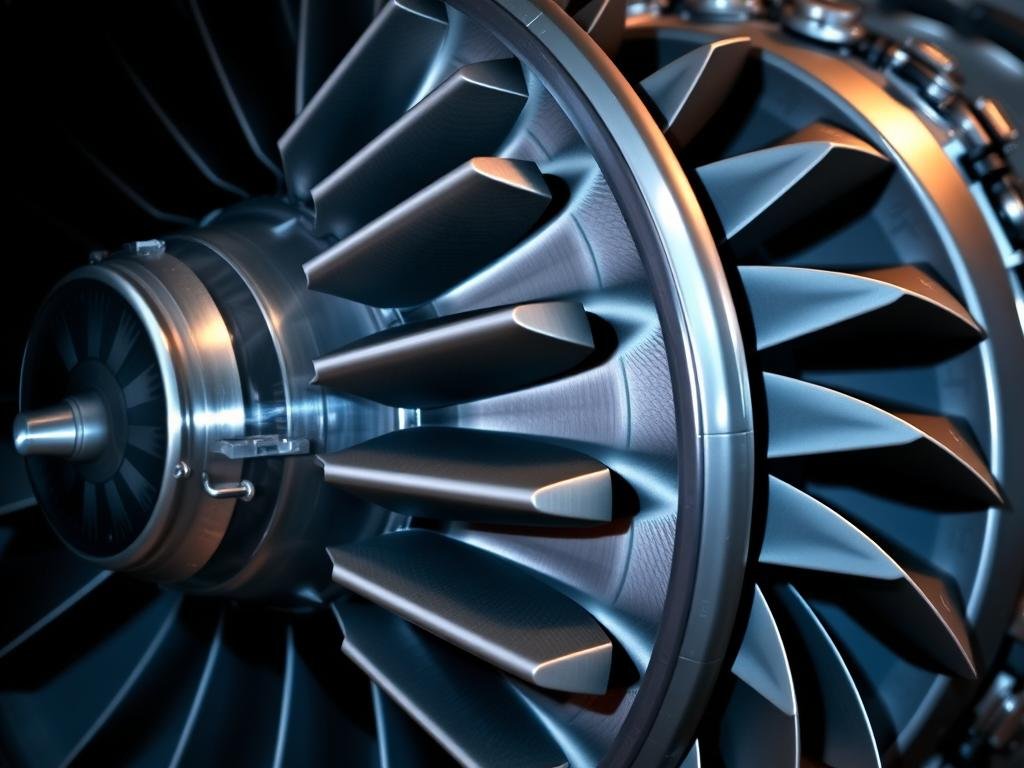
Multi-stage compressor section with precision-engineered blades
Combustion Chamber
The combustion chamber is where fuel meets compressed air in a carefully controlled environment. Modern combustors use advanced designs like annular combustors or can-annular arrangements to ensure stable, efficient combustion while minimizing emissions. Temperatures here can exceed 1,600°C (2,900°F), necessitating sophisticated cooling systems and advanced materials.
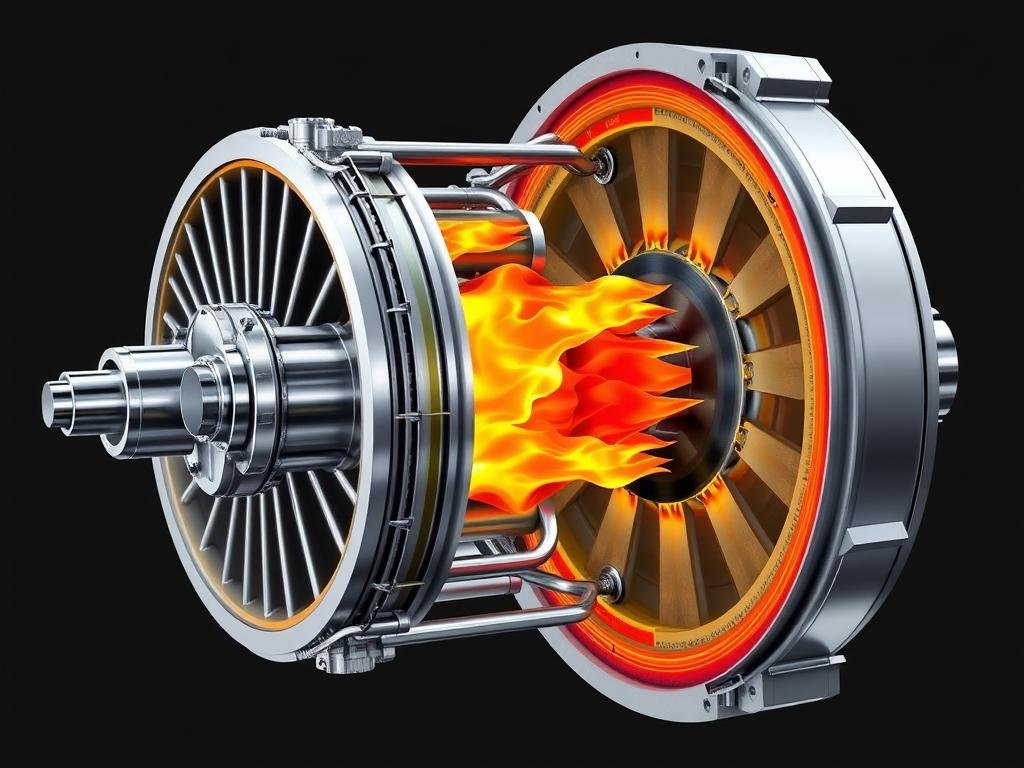
Combustion chamber design showing fuel injection and flame stabilization systems
Turbine Section
The turbine section extracts energy from the hot, high-pressure gas flow. Multiple stages of precisely engineered turbine blades convert the gas’s thermal and kinetic energy into rotational mechanical energy. These components must withstand extreme temperatures and mechanical stresses, requiring advanced materials like single-crystal superalloys and sophisticated cooling techniques.
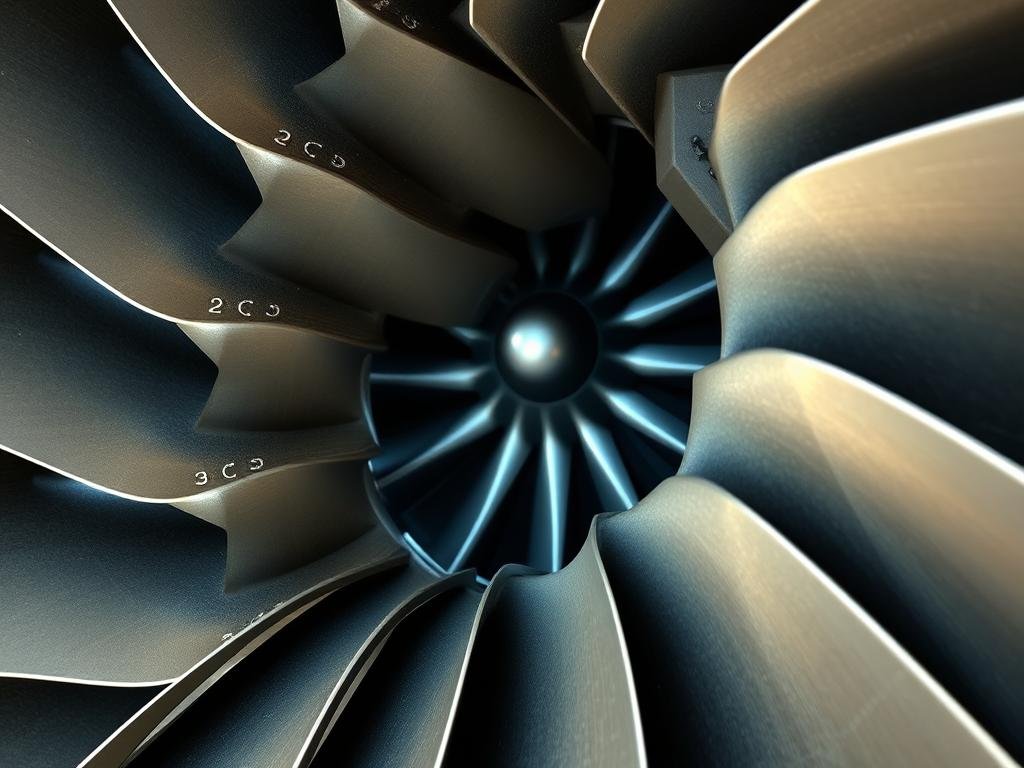
High-temperature turbine blades with internal cooling passages and thermal barrier coatings
Exhaust Section
The exhaust section manages the flow of spent gases after energy extraction. In power generation applications, this often includes heat recovery steam generators (HRSGs) that capture waste heat to produce steam for additional power generation in combined cycle plants.
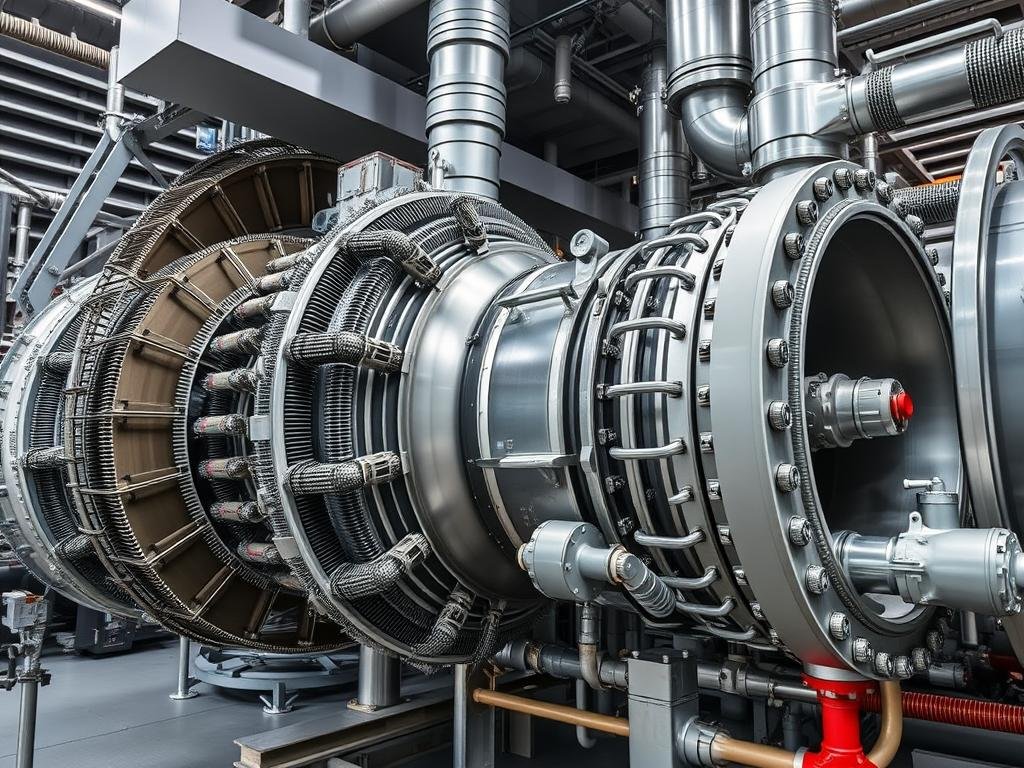
Exhaust section with integrated heat recovery system for combined cycle efficiency
Types of Gas Turbines: Aeroderivative vs. Heavy-Duty
Gas turbines generally fall into two main categories, each with distinct characteristics suited to different applications.
Aeroderivative Gas Turbines
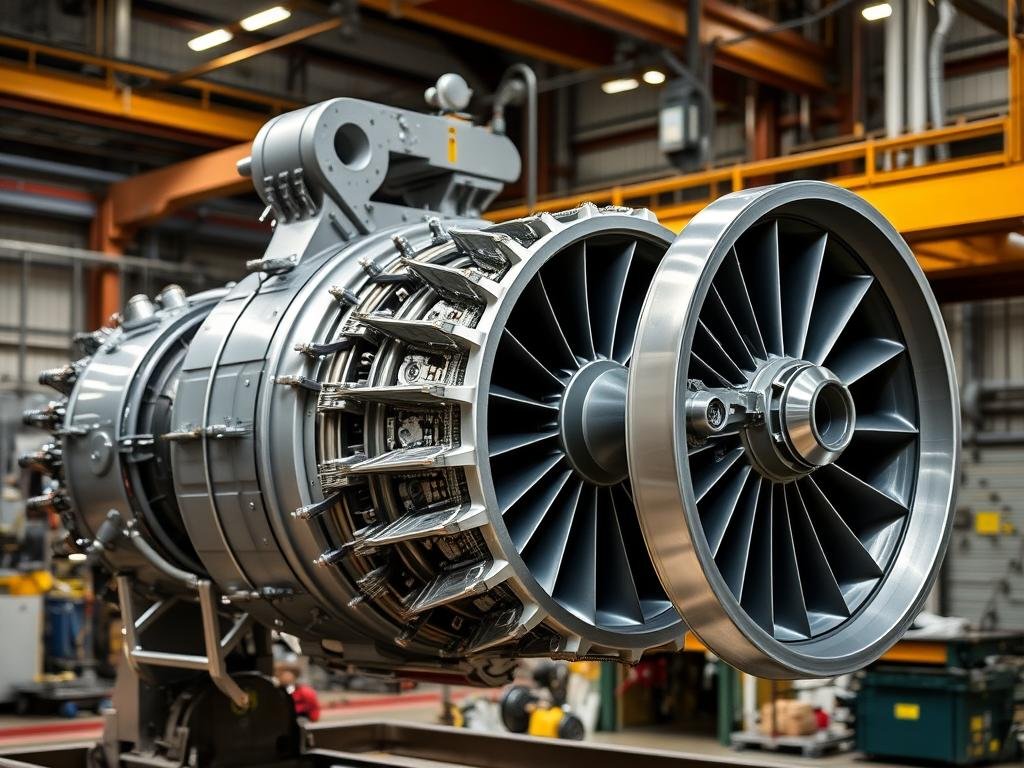
Aeroderivative gas turbine derived from aircraft engine technology
Aeroderivative gas turbines are adapted from aircraft jet engines for industrial and marine applications. Their key advantages include:
- Exceptional power-to-weight ratios
- Rapid start-up and shutdown capabilities (as quick as 5 minutes)
- Higher efficiency in smaller power ranges (typically 5-100 MW)
- Modular design allowing for easier maintenance
- Greater operational flexibility for cycling and peaking applications
Example: The GE LM6000 series, derived from the CF6 aircraft engine, delivers up to 56 MW with efficiency exceeding 40% in simple cycle operation.
Heavy-Duty Industrial Gas Turbines
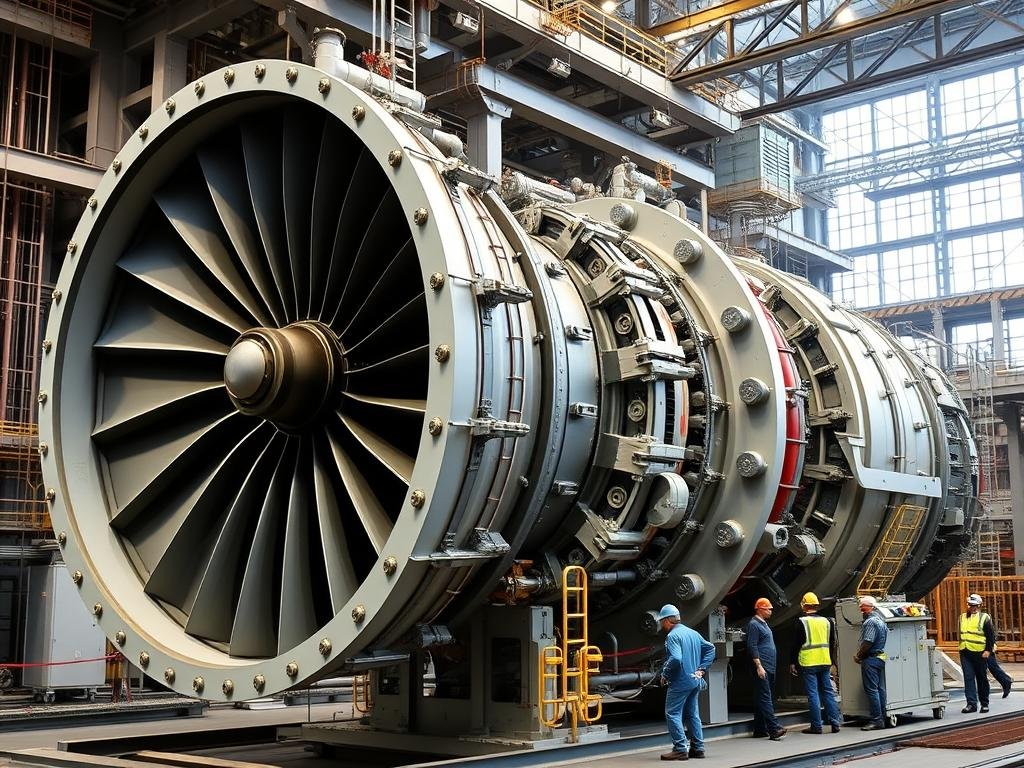
Heavy-duty industrial gas turbine designed for continuous power generation
Heavy-duty industrial gas turbines are purpose-built for power generation and large-scale industrial applications. Their distinguishing features include:
- Higher power output (typically 100-600 MW)
- Robust design for continuous operation (8,000+ hours between maintenance)
- Superior efficiency in combined cycle applications (exceeding 63%)
- Lower maintenance costs per kilowatt-hour
- Optimized for baseload power generation
Example: The Siemens SGT5-9000HL turbine generates 593 MW with class-leading efficiency for large-scale power plants.
Find the Right Gas Turbine for Your Application
Our comprehensive Gas Turbine Selection Guide helps you identify the optimal turbine type based on your specific requirements, including power needs, operational profile, and efficiency targets.
Applications: Versatility Across Industries
The exceptional power density and operational flexibility of gas turbines make them ideal for diverse applications across multiple sectors.
Power Generation
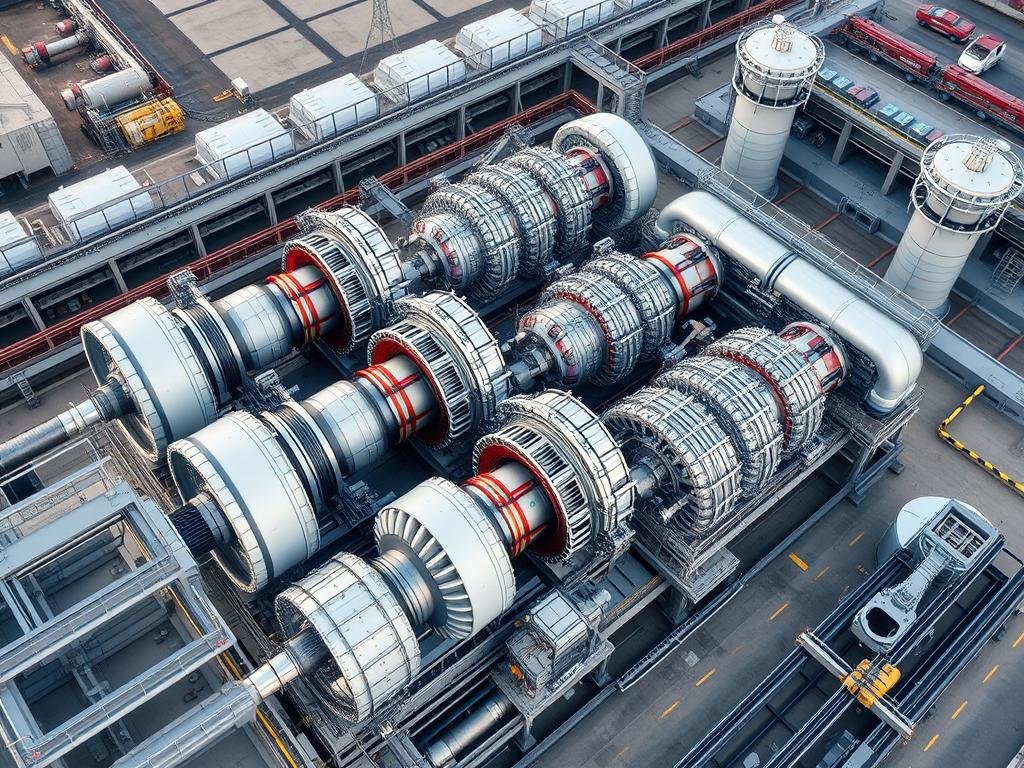
Combined cycle power plant utilizing gas turbines for efficient electricity generation
In electricity generation, gas turbines excel in several configurations:
- Simple cycle plants for peaking power and grid stability
- Combined cycle plants achieving 60%+ efficiency by recovering exhaust heat
- Cogeneration systems providing both electricity and useful heat
- Grid stabilization and backup for renewable energy
Aviation
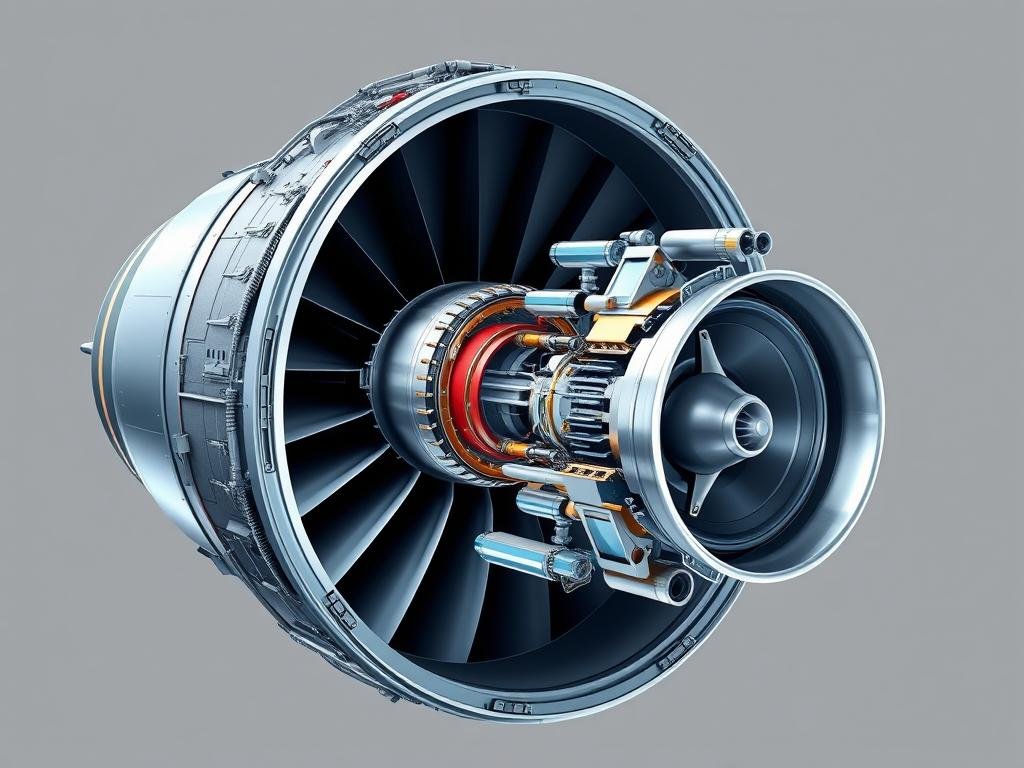
Cutaway view of a modern jet engine showing the gas turbine core
In aviation, gas turbines power virtually all commercial and military aircraft:
- Turbofan engines for commercial airliners
- Turboprop engines for regional and military transport
- Turbojet engines for high-speed military aircraft
- Turboshaft engines for helicopters and auxiliary power units
Industrial Applications
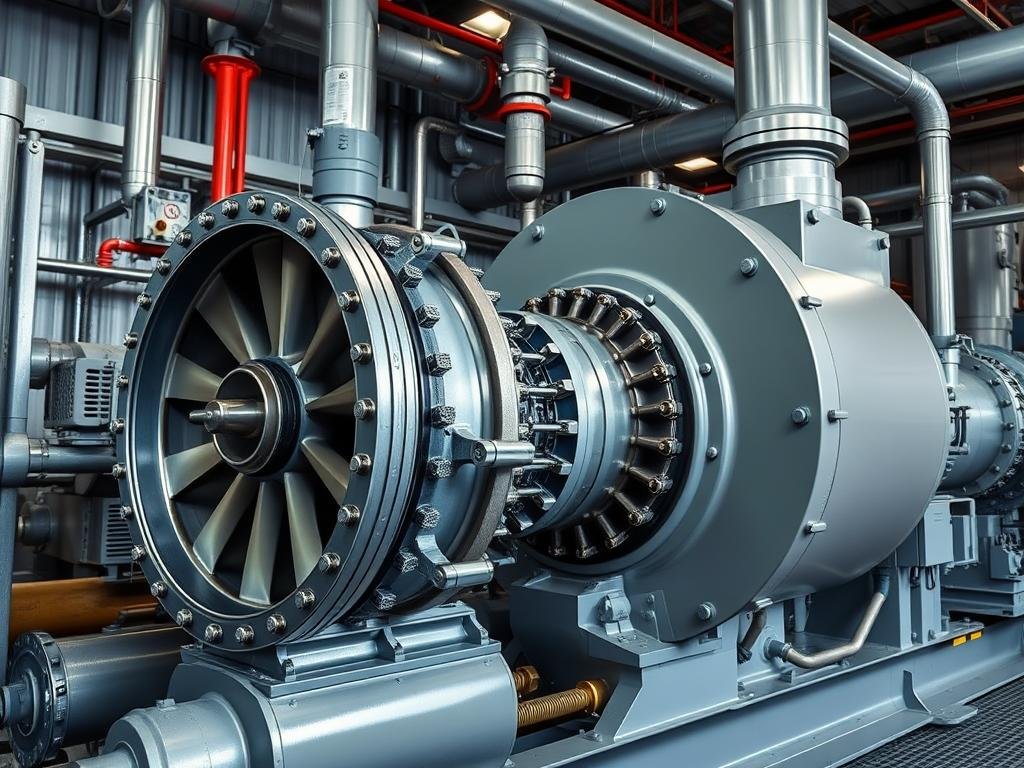
Gas turbine mechanical drive application in natural gas compression
Beyond power generation, gas turbines serve critical industrial functions:
- Driving compressors in natural gas pipelines
- Powering pumps in oil and gas production
- Providing mechanical drive for LNG liquefaction
- Supplying process heat and power in manufacturing
Explore Real-World Gas Turbine Applications
Our collection of case studies showcases successful gas turbine implementations across power generation, oil & gas, and industrial sectors, with detailed performance data and ROI analysis.
Advantages and Challenges of Gas Turbine Technology
Advantages
- High power-to-weight ratio compared to reciprocating engines
- Exceptional reliability with fewer moving parts
- Fuel flexibility including natural gas, diesel, and increasingly hydrogen
- Rapid startup capability (especially aeroderivative units)
- Lower emissions compared to coal and other conventional power sources
- Combined cycle efficiency exceeding 63% in modern plants
- Compact footprint relative to output capacity
Challenges
- High initial capital costs compared to reciprocating engines
- Performance degradation in hot and high-altitude conditions
- Efficiency losses at part-load operation
- Complex maintenance requiring specialized expertise
- NOx emissions challenges at high firing temperatures
- Water consumption for NOx control in some designs
- Heat rate penalties with aging and fouling
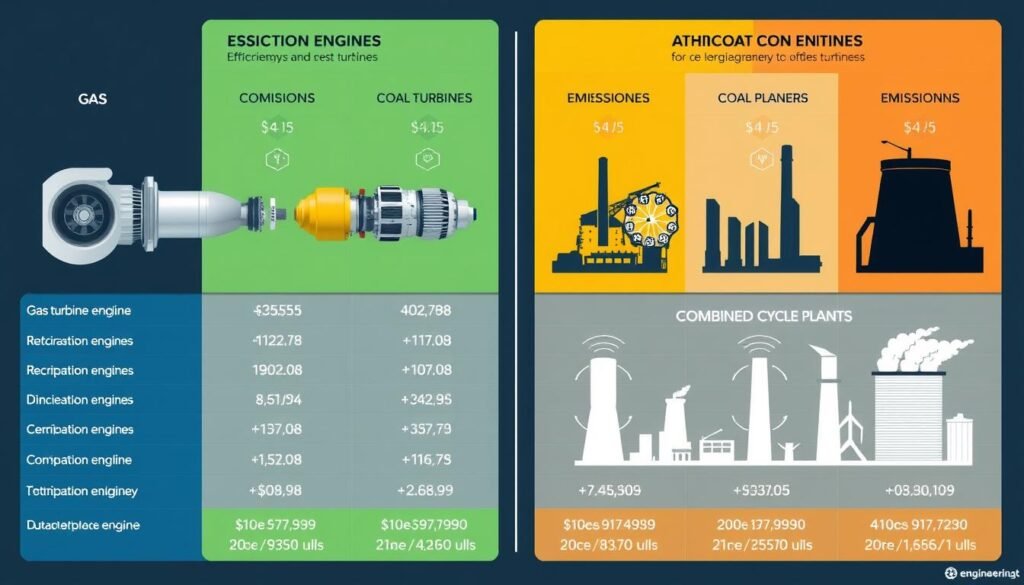
Comparative analysis of efficiency, emissions, and cost factors across power generation technologies
Recent Innovations in Gas Turbine Technology
The gas turbine industry continues to push technological boundaries, with several key innovations driving performance improvements and addressing environmental challenges.
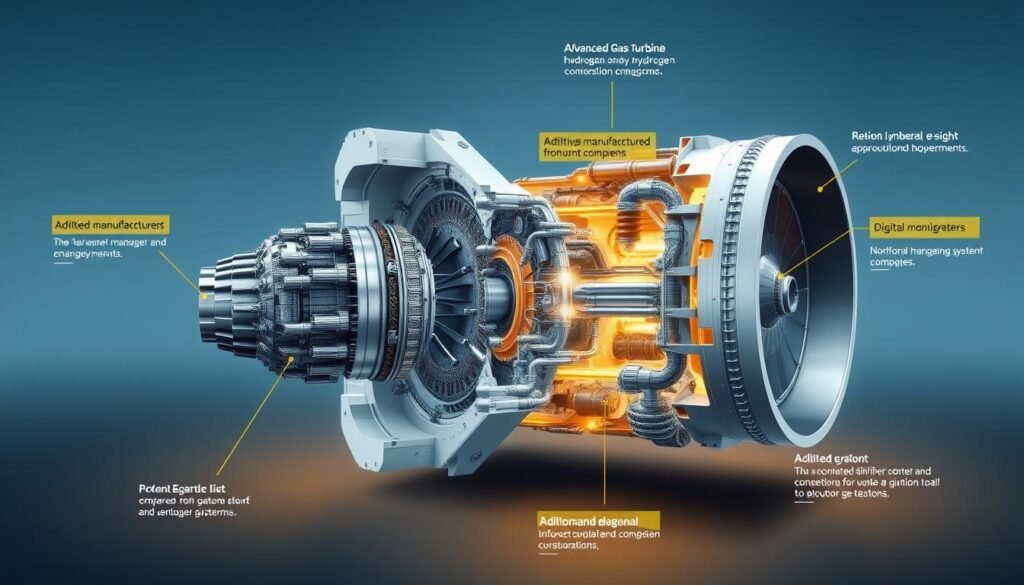
Next-generation gas turbine featuring hydrogen combustion capability and advanced manufacturing techniques
Additive Manufacturing Revolution
Additive manufacturing (3D printing) has transformed gas turbine design and production. This technology enables the creation of complex geometries impossible with conventional manufacturing, resulting in:
- Optimized cooling passages in turbine blades
- Reduced part count and assembly complexity
- Faster prototyping and development cycles
- More efficient combustor designs with improved fuel mixing
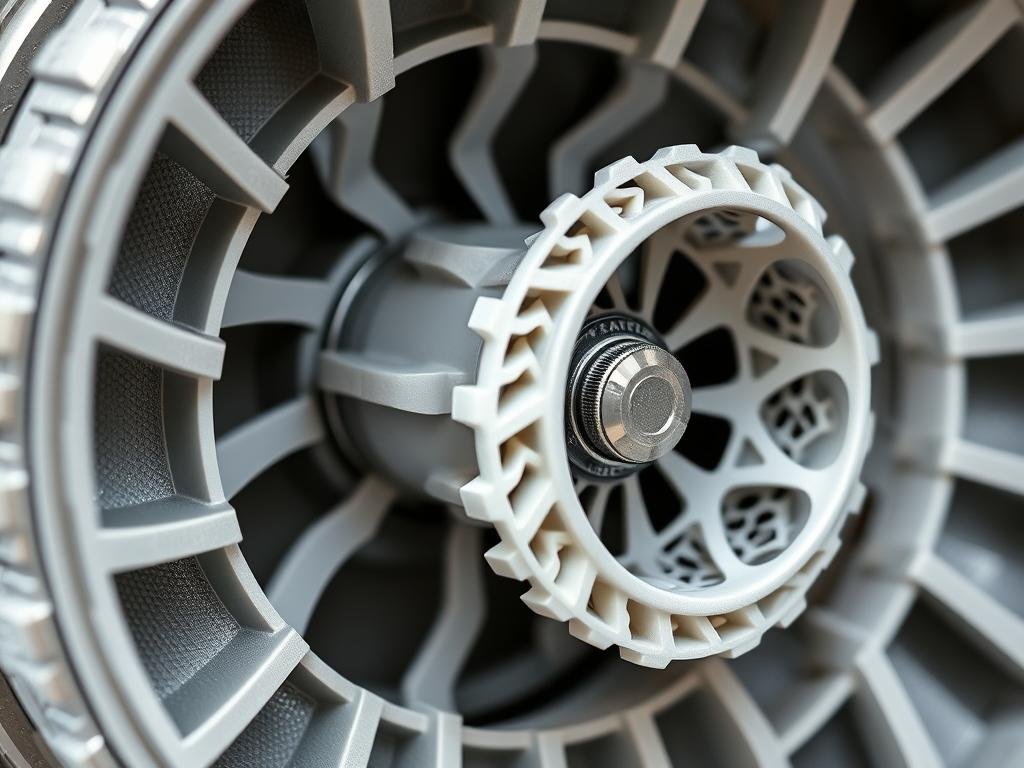
3D printed turbine components with optimized internal cooling structures
Hydrogen Combustion Technology
As the energy sector pursues decarbonization, hydrogen combustion has emerged as a promising pathway for gas turbines. Leading manufacturers are developing turbines capable of operating on hydrogen blends or 100% hydrogen:
- Modified combustor designs to manage hydrogen’s higher flame speed
- Advanced materials to withstand hydrogen’s unique properties
- Staged implementation allowing gradual transition from natural gas
- Zero-carbon operation when using green hydrogen
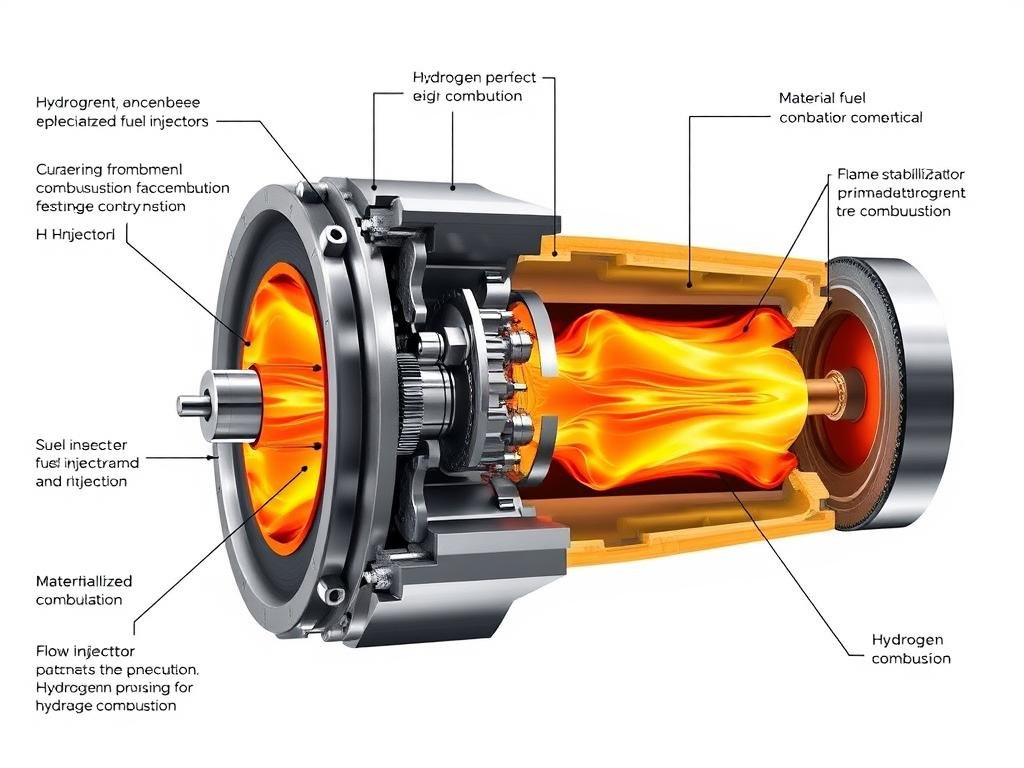
Specialized combustor design for stable hydrogen combustion in gas turbines
Digital Twins and Advanced Analytics
Digital twin technology creates virtual replicas of physical gas turbines, enabling:
- Real-time performance monitoring and optimization
- Predictive maintenance reducing unplanned downtime
- Virtual testing of operational scenarios
- Lifetime extension through optimized operation
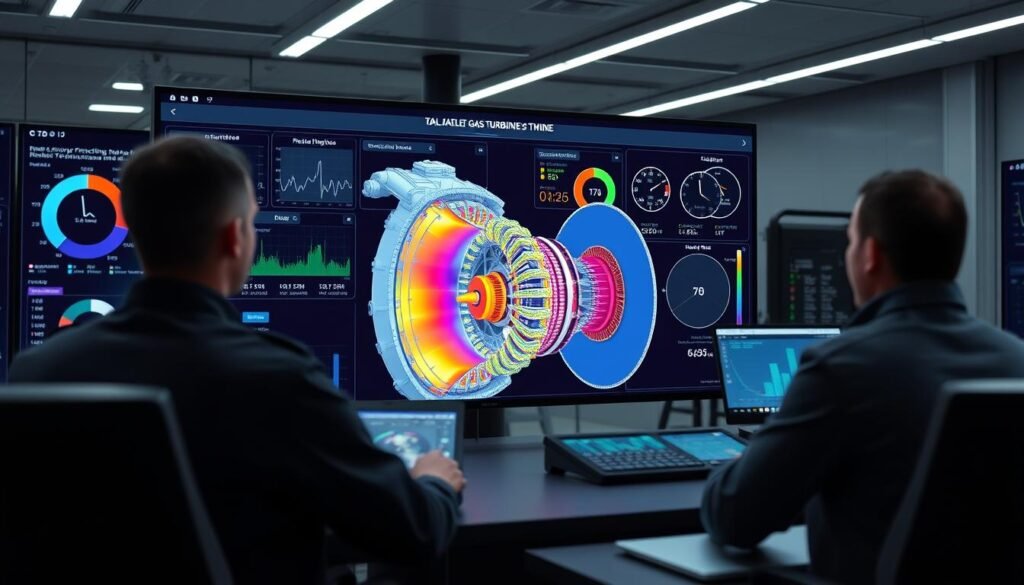
Digital twin interface providing real-time monitoring and predictive analytics
Assess Your Hydrogen Readiness
Our Hydrogen Readiness Assessment tool helps you evaluate your existing gas turbine assets for hydrogen compatibility and develop a strategic roadmap for future fuel flexibility.
Future Trends: The Evolving Role of Gas Turbines
Gas turbines are adapting to play a crucial role in the evolving energy landscape, with several key trends shaping their future development.
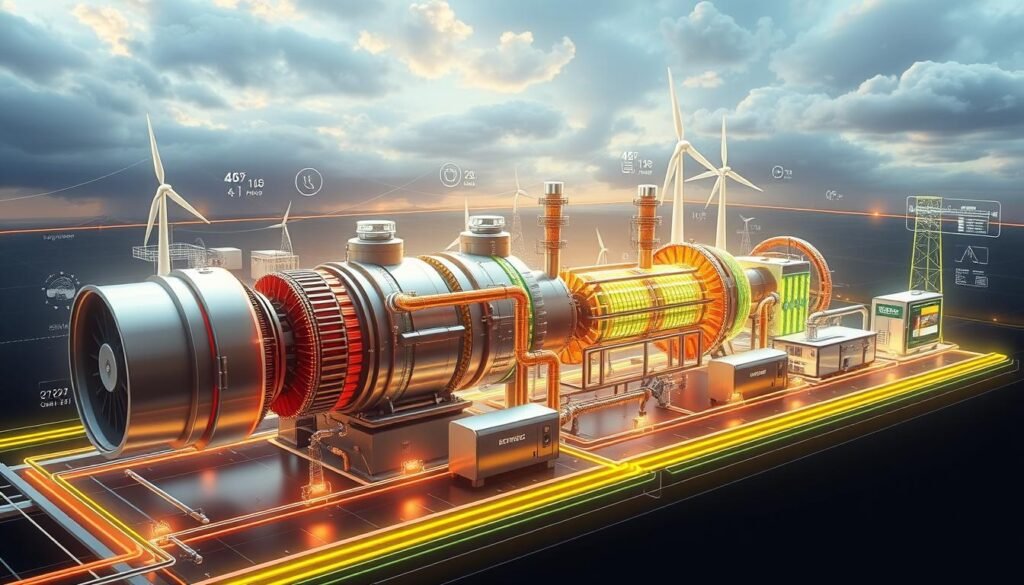
Integrated energy system with gas turbines supporting renewable generation
Hybrid Power Systems
Hybrid power systems integrate gas turbines with renewable energy sources and energy storage to create more flexible and resilient power generation. These systems leverage the strengths of each technology:
- Battery storage for instantaneous response to grid fluctuations
- Gas turbines providing firm capacity and grid inertia
- Renewable generation for zero-carbon baseload when available
- Integrated control systems optimizing overall performance
Carbon Capture Integration
Carbon capture, utilization, and storage (CCUS) technologies are being integrated with gas turbines to enable low or zero-carbon operation even when using conventional fuels:
- Post-combustion capture systems for existing plants
- Oxy-fuel combustion for concentrated CO₂ streams
- Exhaust gas recirculation reducing capture costs
- Integration with industrial carbon utilization
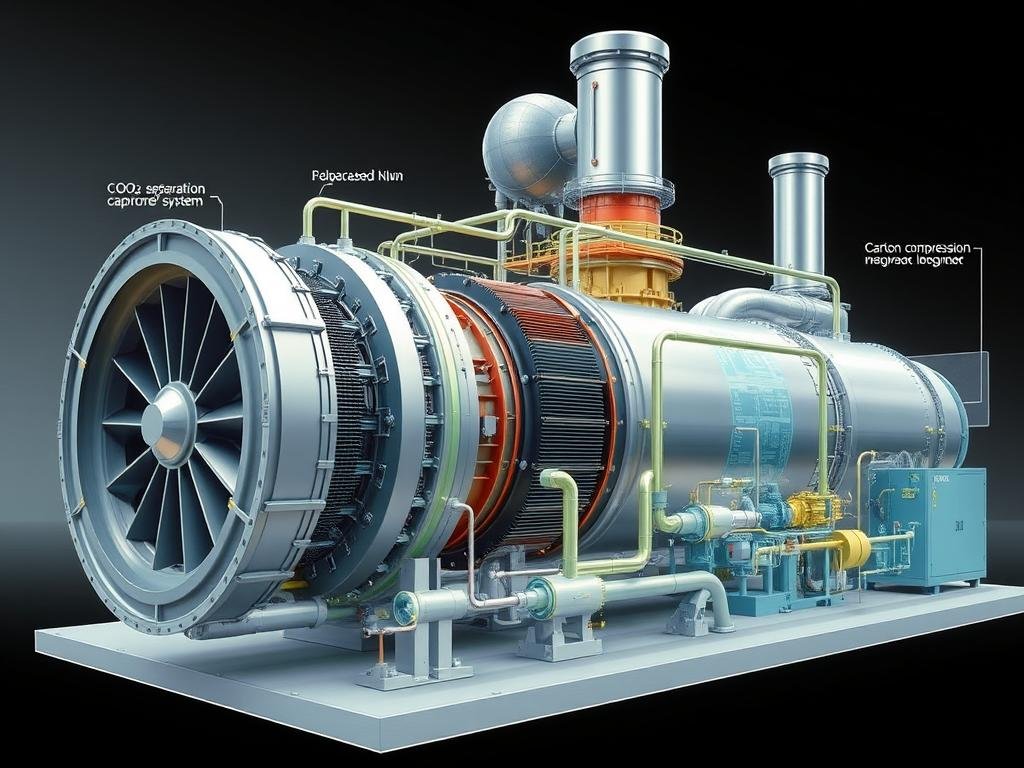
Gas turbine power plant with integrated carbon capture technology
Advanced Ceramics and Composite Materials
Next-generation ceramic matrix composites (CMCs) and advanced materials are enabling higher operating temperatures and improved durability:
- Higher temperature capability increasing efficiency
- Reduced cooling air requirements
- Lighter weight components reducing mechanical stress
- Extended component lifetimes in harsh conditions
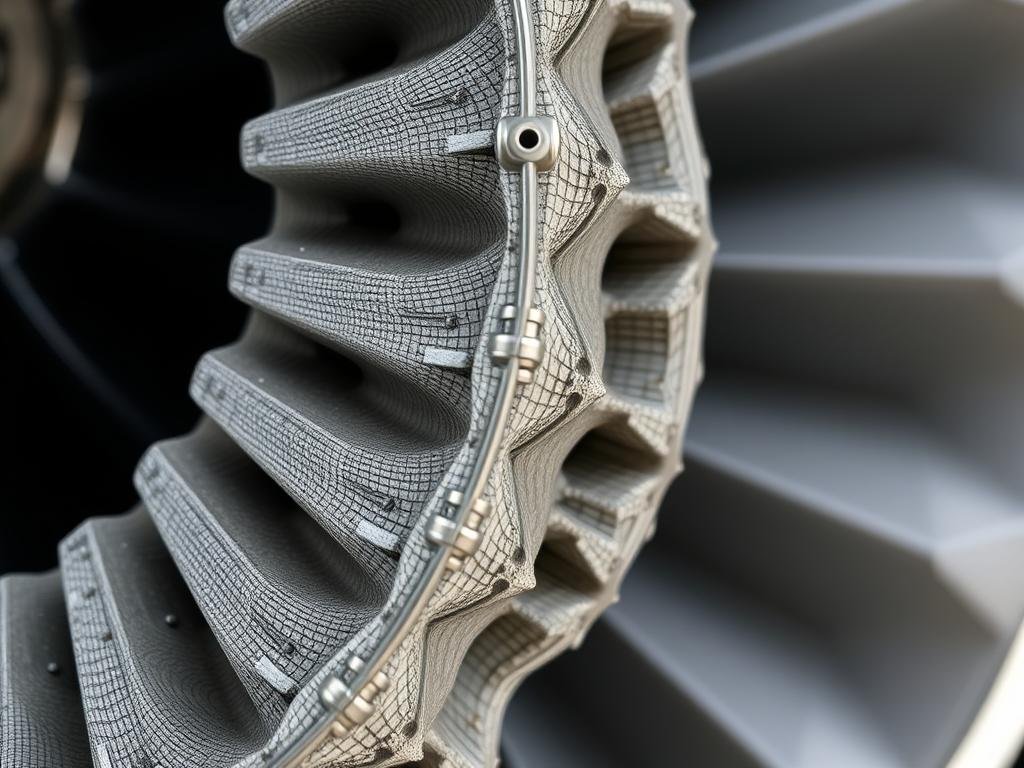
Ceramic matrix composite turbine components enabling higher temperature operation
Conclusion: Gas Turbines in a Sustainable Energy Future
Gas turbines stand at a pivotal moment in their technological evolution. As the world transitions toward more sustainable energy systems, these versatile machines are adapting to meet new challenges while building on their core strengths of reliability, power density, and operational flexibility.
The path forward involves continued innovation in materials, manufacturing techniques, and system integration. Hydrogen combustion capability, carbon capture compatibility, and seamless integration with renewable energy sources will define the next generation of gas turbines. These advancements will enable gas turbines to serve as a critical bridge technology in the energy transition—providing the dispatchable power needed to support growing renewable generation while progressively reducing their own carbon footprint.
For engineers, operators, and decision-makers in the energy sector, staying informed about these technological developments is essential for making sound strategic investments in power generation assets that will remain valuable for decades to come.
Optimize Your Gas Turbine Performance
Our comprehensive Gas Turbine Efficiency Calculator helps you identify optimization opportunities, evaluate upgrade options, and quantify potential performance improvements for your specific installation.